Abstract
Infection by the fungal endophyte Acremonium coenophialum affected the accumulation of inorganic and organic N in leaf blades and leaf sheaths of KY 31 tall fescue (Festuca arundinacea Schreb.) grown under greenhouse conditions. Total soluble amino acid concentrations were increased in either the blade or sheath of the leaf from infected plants. A number of amino acids were significantly increased in the sheath, but only asparagine increased in the blade. Infection resulted in higher sheath NH4+ concentrations, whereas NO3− concentrations decreased in both leaf parts. The effects on amino acid, NO3−, and NH4+ concentrations were dependent upon the level of N fertilization and were usually apparent only at the high rate (10 millimolar) of application. Administration of 14CO2 to the leaf blades increased the accumulation of 14C in their amino acid fraction but not in the sheaths of infected plants. This may indicate that infection increased amino acid synthesis in the blade but that translocation to the sheath, which is the site of fungal colonization, was not affected. Glutamine synthetase activity was greater in leaf blades of infected plants at high and low N rates of fertilization, but nitrate reductase activity was not affected in either part of the leaf. Increased activities of glutamine synthetase together with the other observed changes in N accumulation and metabolism in endophyte-infected tall fescue suggest that NH4+ reassimilation could also be affected in the leaf blade.
Full text
PDF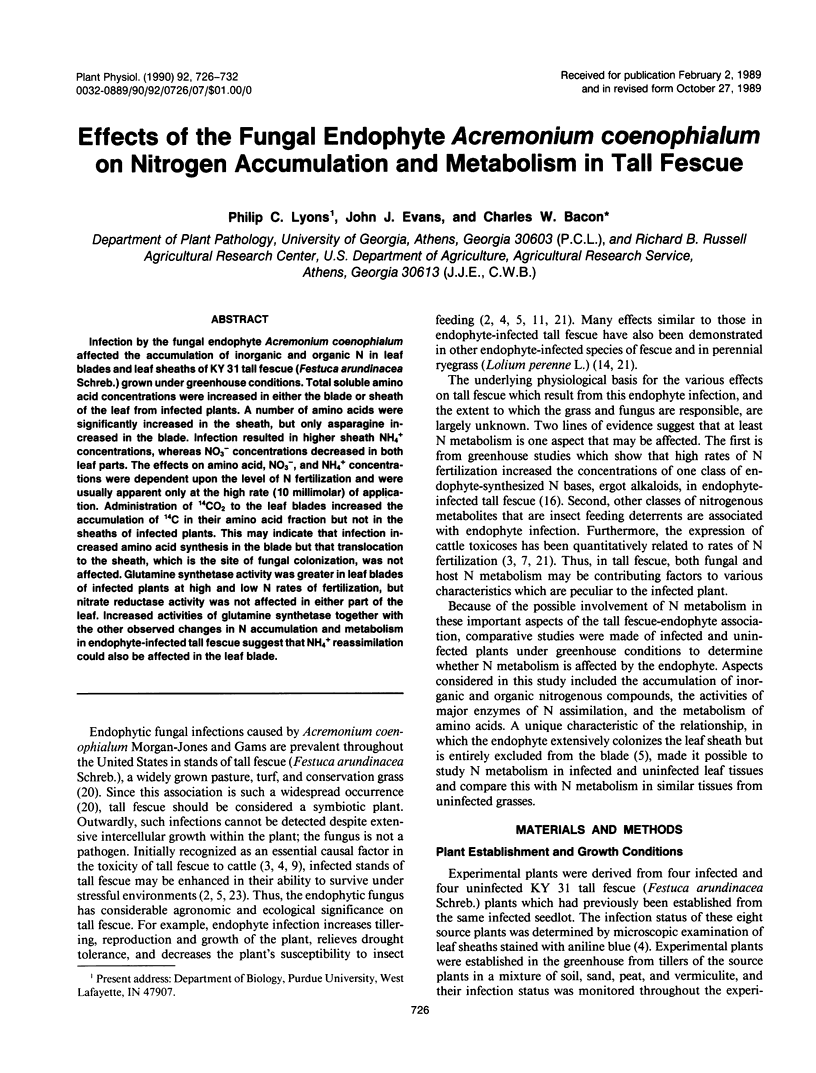
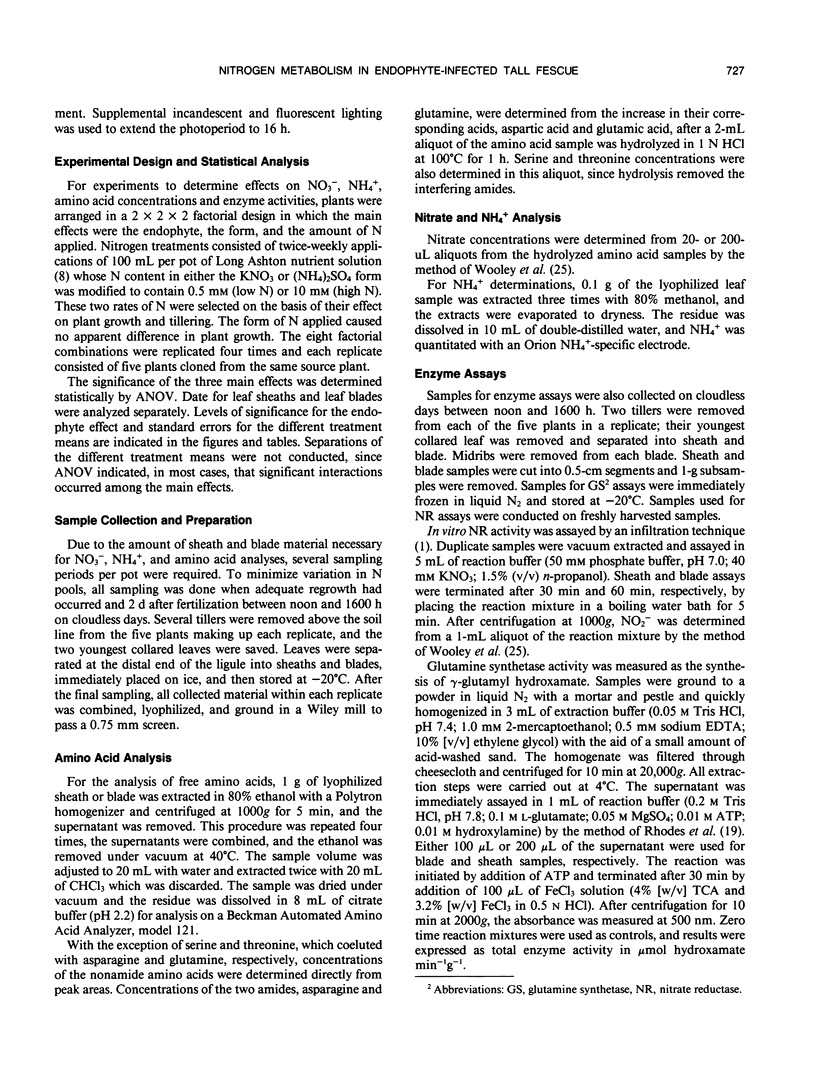
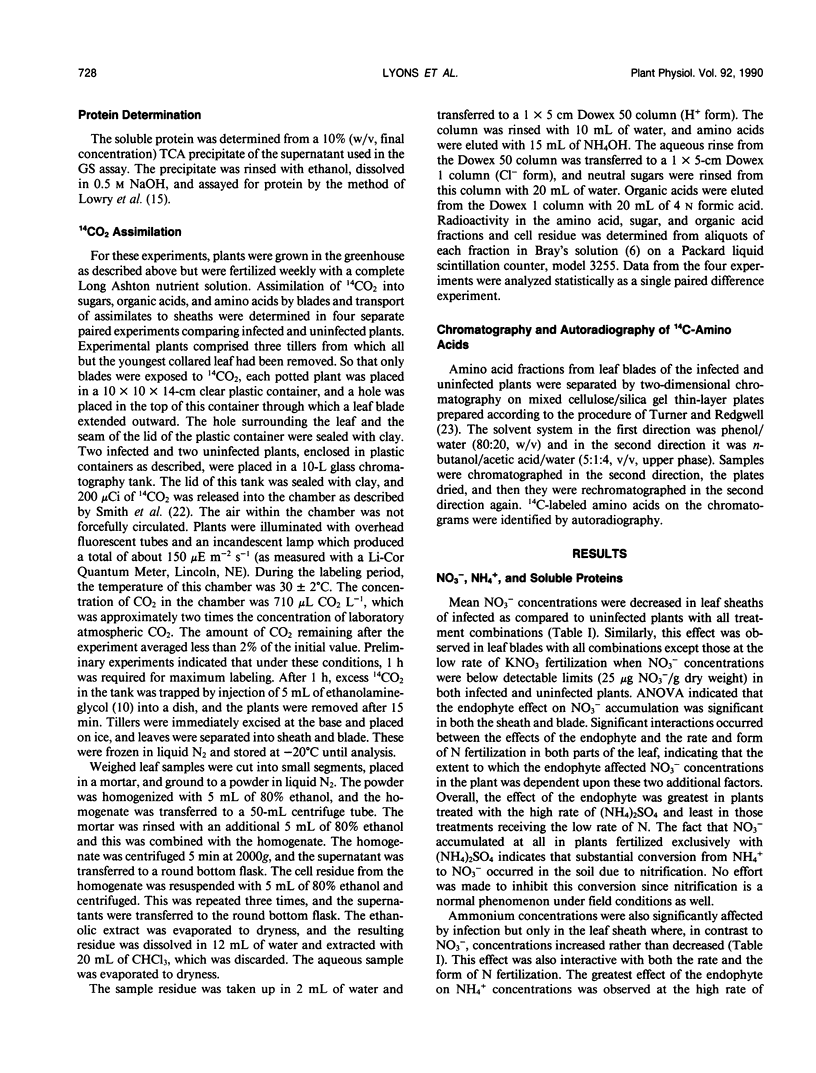
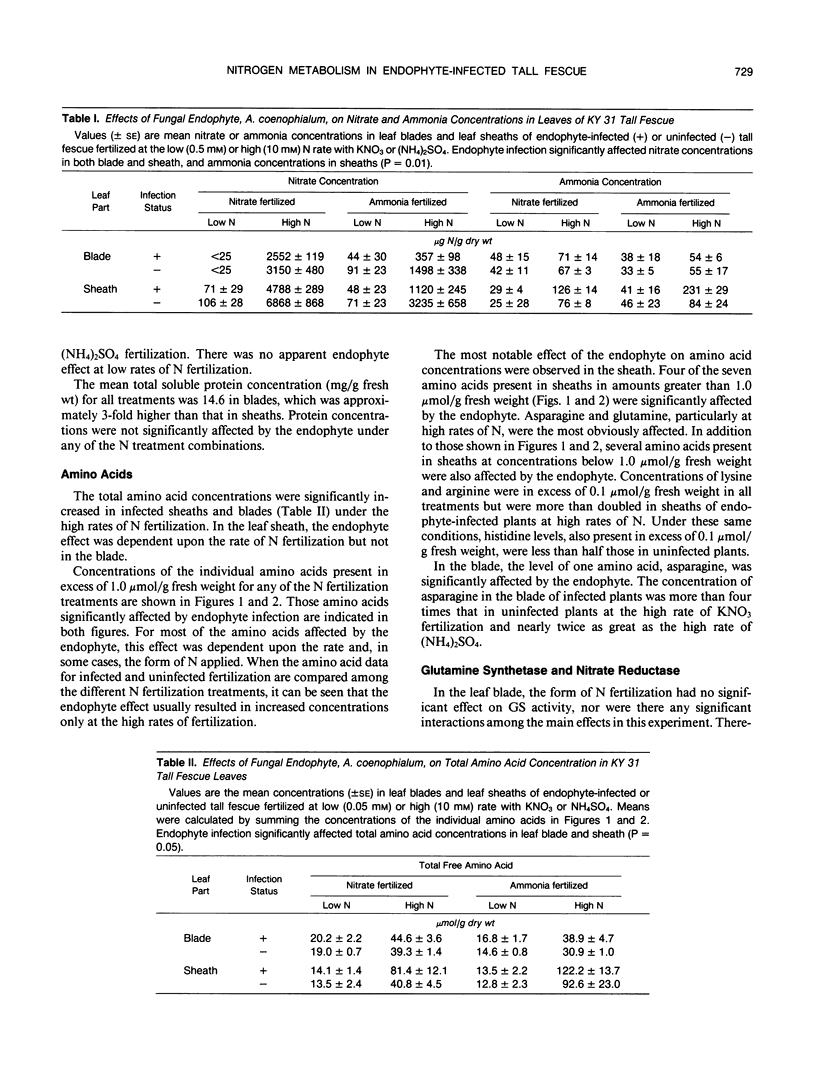
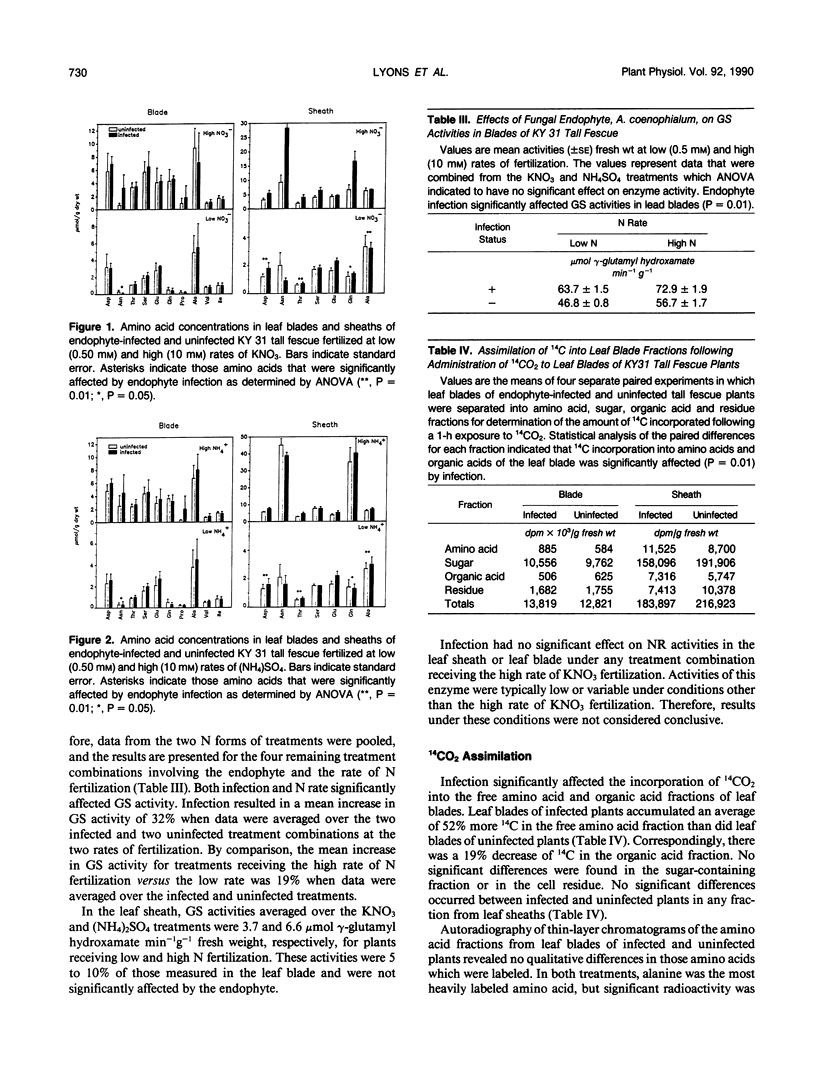
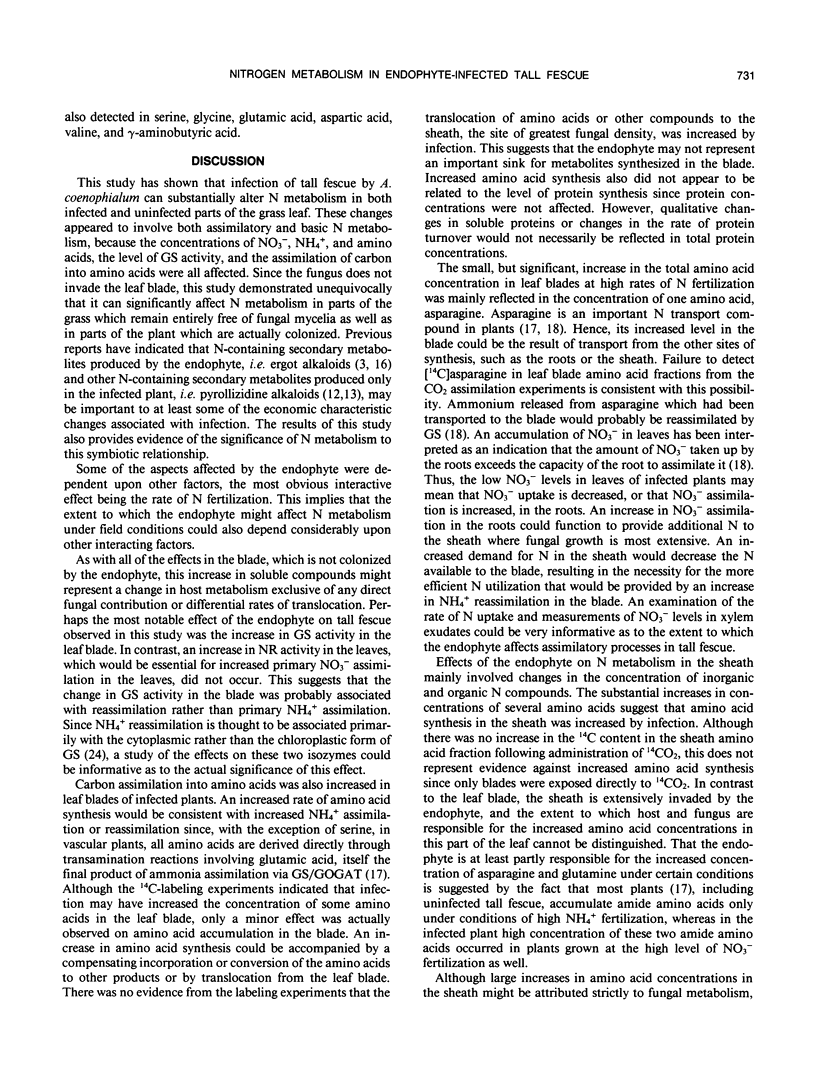
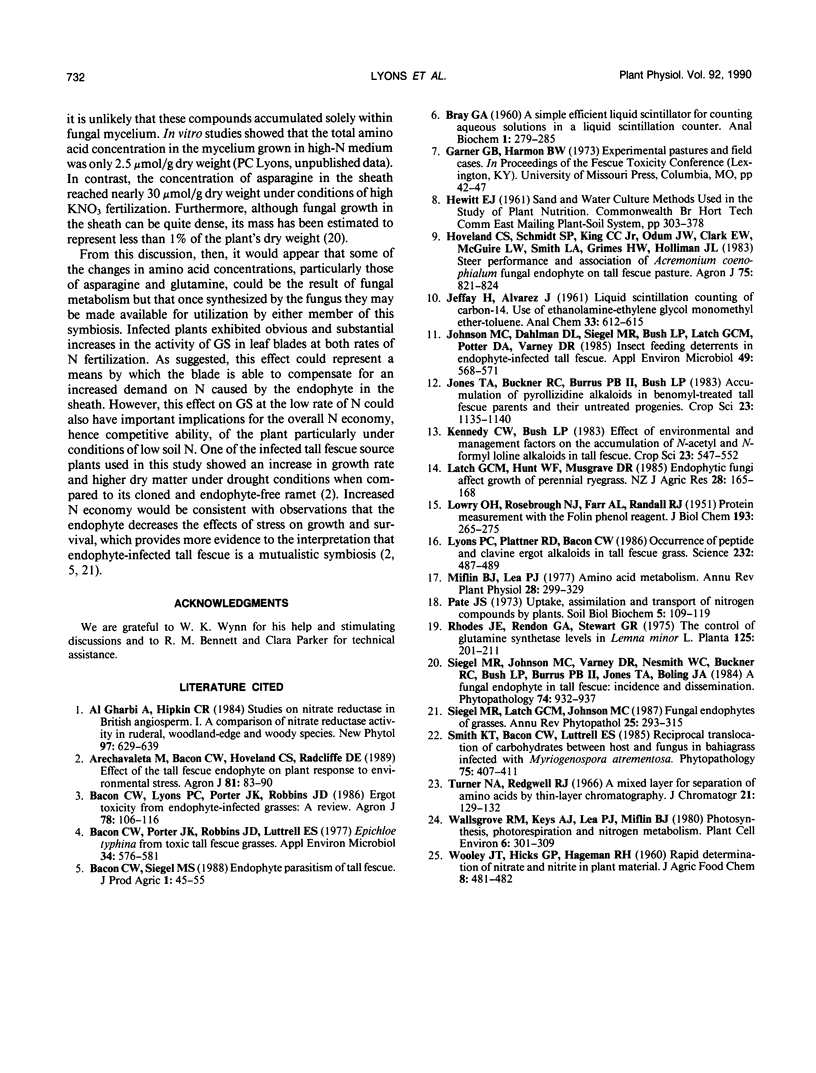
Selected References
These references are in PubMed. This may not be the complete list of references from this article.
- Bacon C. W., Porter J. K., Robbins J. D., Luttrell E. S. Epichloë typhina from toxic tall fescue grasses. Appl Environ Microbiol. 1977 Nov;34(5):576–581. doi: 10.1128/aem.34.5.576-581.1977. [DOI] [PMC free article] [PubMed] [Google Scholar]
- Johnson M. C., Dahlman D. L., Siegel M. R., Bush L. P., Latch G. C., Potter D. A., Varney D. R. Insect feeding deterrents in endophyte-infected tall fescue. Appl Environ Microbiol. 1985 Mar;49(3):568–571. doi: 10.1128/aem.49.3.568-571.1985. [DOI] [PMC free article] [PubMed] [Google Scholar]
- LOWRY O. H., ROSEBROUGH N. J., FARR A. L., RANDALL R. J. Protein measurement with the Folin phenol reagent. J Biol Chem. 1951 Nov;193(1):265–275. [PubMed] [Google Scholar]
- Lyons P. C., Plattner R. D., Bacon C. W. Occurrence of peptide and clavine ergot alkaloids in tall fescue grass. Science. 1986 Apr 25;232(4749):487–489. doi: 10.1126/science.3008328. [DOI] [PubMed] [Google Scholar]
- Turner N. A., Redgwell R. J. A mixed layer for separation of amino acids by thin-layer chromatography. J Chromatogr. 1966 Jan;21(1):129–132. doi: 10.1016/s0021-9673(01)91273-7. [DOI] [PubMed] [Google Scholar]


